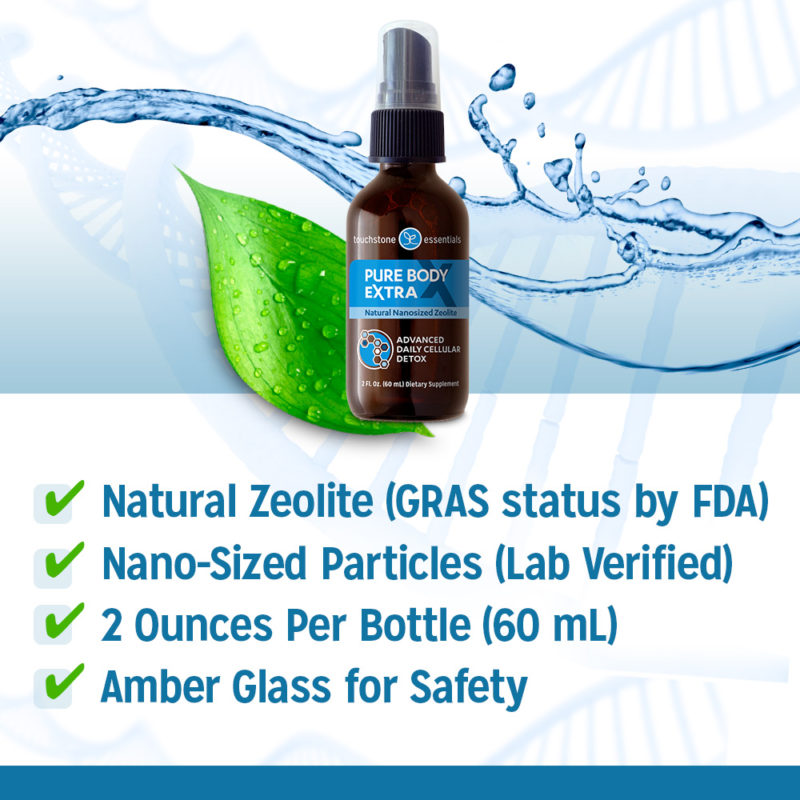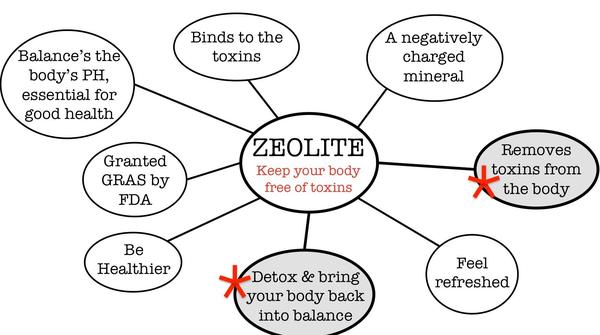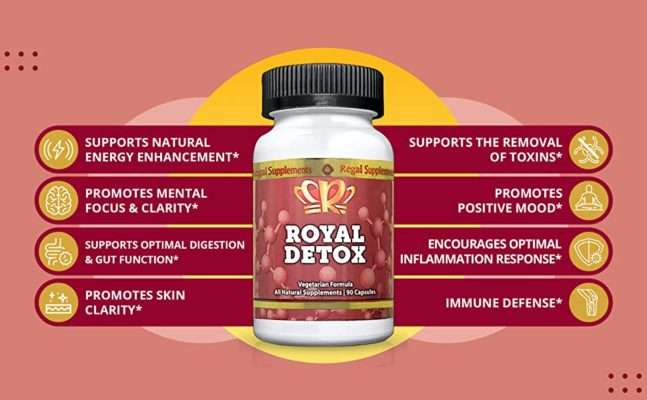Hey there, health-conscious readers! I’m excited to dive into a topic that’s been creating quite a buzz lately: graphene oxide. As someone who’s always been fascinated by emerging scientific discoveries and their potential impact on our health, I couldn’t resist digging deeper into this subject.
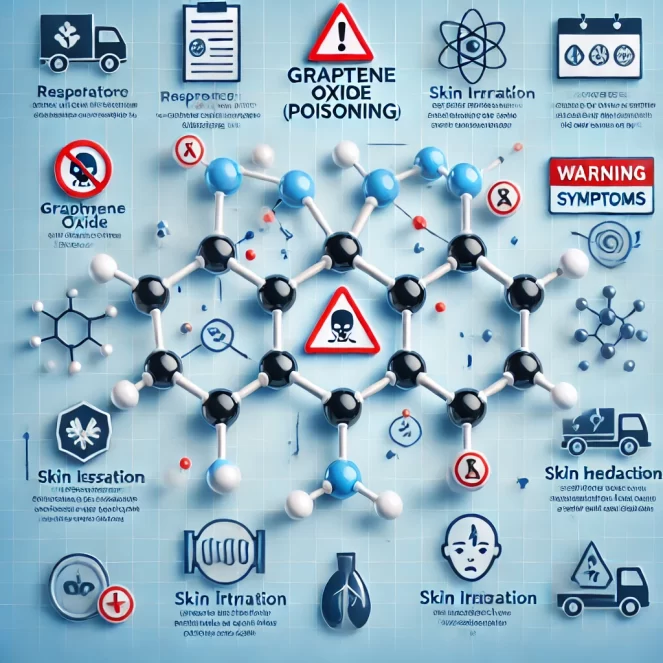
In this post, we’ll explore what graphene oxide is, address some of the concerns surrounding it, and discuss potential detox methods that have been making the rounds on the internet. One such method involves clinoptilolite zeolite, which we’ll examine in detail.
Before we begin, I want to emphasize that I’m not a medical professional – just a curious blogger passionate about health and wellness. The information I’m sharing comes from my research and should not be considered medical advice. Always consult with your healthcare provider before making any changes to your health routine or trying new treatments.
So, grab a cup of your favorite herbal tea, get comfortable, and let’s embark on this informative journey together!
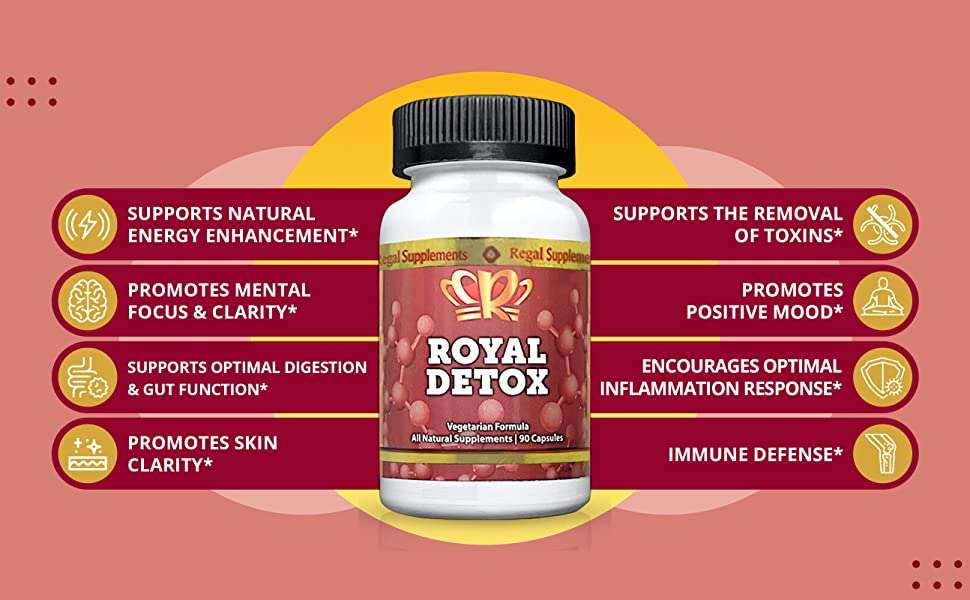
Understanding Graphene Oxide:
What is Graphene Oxide?
Graphene oxide is a fascinating material that’s been making waves in the scientific community. It’s a derivative of graphene, which itself is a single layer of carbon atoms arranged in a hexagonal lattice. To create graphene oxide, graphene undergoes a chemical process that introduces oxygen-containing groups to its structure.
This might sound a bit technical, but think of it like this: if graphene is a perfectly flat sheet of carbon atoms, graphene oxide is that same sheet but with some oxygen atoms sticking out here and there. This seemingly small change gives graphene oxide some unique properties that researchers are excited about.
Properties and Potential Applications:
The properties of graphene oxide have scientists and engineers buzzing with possibilities. Here are some of its notable characteristics:
- Strength and flexibility: Despite being incredibly thin, graphene oxide is remarkably strong and flexible.
- Electrical properties: It can be engineered to be either conductive or non-conductive, depending on how it’s processed.
- Large surface area: Its structure provides an enormous surface area relative to its volume.
- Biocompatibility: Some studies suggest it might be compatible with biological systems, opening doors for medical applications.
These properties have led researchers to explore a wide range of potential applications for graphene oxide, including:
- Electronics: It could be used in next-generation electronic devices, potentially making them faster and more efficient.
- Water purification: Its large surface area and ability to be functionalized make it a promising candidate for water filtration systems.
- Medicine: Some researchers are exploring its potential in drug delivery systems and tissue engineering.
- Energy storage: It might play a role in developing more efficient batteries and supercapacitors.
The Controversy Surrounding Graphene Oxide:
Despite its promising applications, graphene oxide has become a subject of controversy and concern for some people. Let’s examine some of these concerns and what the current scientific understanding is.
Online Claims and Theories:
If you’ve been browsing health forums or alternative news sites, you might have come across some alarming claims about graphene oxide. Some of the concerns I’ve seen include:
- Alleged presence in vaccines: Some online sources have claimed that certain vaccines contain graphene oxide, though these claims have been refuted by health authorities and vaccine manufacturers there have been reliable sources that have shown proof.
- Supposed toxicity: There are theories circulating about graphene oxide being toxic to human cells.
- Electromagnetic properties: Some have expressed worry about graphene oxide’s potential interaction with electromagnetic fields.
What Does the Science Say?
When it comes to graphene oxide’s safety and potential health impacts, the scientific community is still in the process of gathering data. Here’s what we know so far:
- Toxicity studies: Some laboratory studies have indeed shown that graphene oxide can have toxic effects on cells in certain conditions. However, these studies often use concentrations and exposure methods that don’t reflect real-world scenarios.
- Biodegradability: Research suggests that graphene oxide can be biodegradable under certain conditions, which could reduce concerns about long-term accumulation in the body or environment.
- Medical applications: Interestingly, some researchers are actually exploring graphene oxide for potential medical uses, including drug delivery and tissue engineering. This suggests that in controlled amounts and specific forms, it might have beneficial applications in healthcare.
- Environmental impact: Studies are ongoing to understand how graphene oxide might affect ecosystems if it were to be released in large quantities.
- Regulatory status: As of now, major health organizations haven’t issued warnings about widespread graphene oxide exposure or poisoning in the general population.
It’s crucial to understand that the impact of any substance on human health depends on various factors, including the amount of exposure, the route of exposure (ingestion, inhalation, skin contact), and the specific form of the substance. More research is needed to fully understand the potential long-term effects of graphene oxide on human health and the environment.
Supporting Your Body’s Natural Detoxification:
While the jury is still out on the specific health impacts of graphene oxide, many of us are generally interested in supporting our body’s natural detoxification processes. Our bodies are amazing machines with built-in systems for eliminating toxins and waste products. Here are some scientifically-backed ways to support these natural processes:
- Stay Hydrated:
Water is crucial for every bodily function, including detoxification. It helps flush out toxins through urine and sweat. Aim for at least 8 glasses of water a day, and more if you’re active or in a hot climate. - Eat a Balanced, Nutrient-Rich Diet:
A diet rich in fruits, vegetables, whole grains, and lean proteins provides your body with the nutrients it needs to function optimally, including detoxification. Some foods that are particularly supportive of detox processes include:
- Leafy greens like spinach and kale, which are high in chlorophyll
- Cruciferous vegetables like broccoli and Brussels sprouts, which support liver function
- Berries, which are high in antioxidants
- Garlic and onions, which contain sulfur compounds that aid in detoxification
- Get Regular Exercise:
Physical activity promotes circulation and sweating, which can help your body eliminate toxins. Aim for at least 30 minutes of moderate exercise most days of the week. - Ensure Quality Sleep:
During sleep, your body works to repair and regenerate tissues, including those involved in detoxification. Aim for 7-9 hours of quality sleep each night. - Reduce Exposure to Environmental Toxins:
While it’s impossible to avoid all toxins, you can take steps to reduce your exposure:
- Use natural cleaning products when possible
- Choose organic produce when available to reduce pesticide exposure
- Avoid plastic food containers, especially when heating food
- Use air purifiers in your home if you live in an area with poor air quality
- Support Liver Health:
Your liver is your body’s primary detoxification organ. Support its function by:
- Limiting alcohol intake
- Avoiding excessive use of over-the-counter pain medications
- Including liver-supportive foods in your diet, such as beetroot, garlic, and turmeric
Exploring Clinoptilolite Zeolite:
Now, let’s dive into a substance that’s been gaining attention in alternative health circles as a potential detoxification aid: clinoptilolite zeolite.
What is Clinoptilolite Zeolite?
Clinoptilolite is a type of zeolite, which is a naturally occurring volcanic mineral. It has a unique, honeycomb-like structure at the molecular level, which gives it some interesting properties. This structure is what has some alternative health practitioners excited about its potential detoxification capabilities.
How Might Clinoptilolite Zeolite Work?
The theory behind using clinoptilolite zeolite for detoxification is based on its molecular structure and chemical properties:
- Cage-like Structure: The honeycomb structure of zeolites can potentially trap toxins and heavy metals.
- Ion Exchange: Zeolites have a negative charge, which allows them to attract and bind to positively charged ions, including some heavy metals.
- High Surface Area: Despite being a small particle, zeolites have a large surface area due to their structure, potentially increasing their capacity to bind to toxins.
- Selectivity: Some proponents claim that zeolites can selectively bind to toxins while leaving beneficial minerals in the body, though this claim needs more scientific verification.
Potential Benefits and Uses:
Advocates of clinoptilolite zeolite suggest it might help with:
- Heavy Metal Detoxification: Some small studies have indicated it might help reduce levels of heavy metals in the body.
- Gut Health: There’s some preliminary research suggesting it might support a healthy gut microbiome.
- Immune System Support: Some researchers are exploring its potential immune-modulating effects.
- Antioxidant Properties: It may have antioxidant effects, potentially helping to combat oxidative stress in the body.
Scientific Evidence and Considerations:
While the potential of clinoptilolite zeolite is intriguing, it’s important to approach the topic with a balanced perspective:
- Limited Human Studies: Most of the research on clinoptilolite zeolite has been done in laboratory settings or animal studies. More human clinical trials are needed to confirm its effects and safety.
- Quality and Purity Concerns: Not all zeolite products are created equal. The source, processing methods, and purity can vary widely between products.
- Potential Side Effects: While generally considered safe, some people might experience side effects like constipation or dehydration. Long-term effects of regular use are not well-studied.
- Interactions: Like any supplement, zeolites could potentially interact with medications or affect the absorption of nutrients. Always consult with a healthcare provider before starting any new supplement regimen.
- Regulatory Status: The FDA has not approved zeolites for use as a dietary supplement for detoxification purposes. They are mainly recognized for industrial and agricultural uses.
It’s worth noting that while some people report positive experiences with clinoptilolite zeolite, its effectiveness for detoxifying specific substances like graphene oxide is largely speculative and not backed by scientific studies.
My Personal Perspective:
As someone who’s always been fascinated by both cutting-edge science and natural health approaches, I find the discussions around graphene oxide and potential detox methods like clinoptilolite zeolite incredibly interesting. However, I also believe in the importance of approaching these topics with a critical and balanced mindset.
On one hand, the potential applications of graphene oxide in fields like medicine and technology are exciting. On the other hand, I understand the concerns some people have about new materials and their potential impacts on health and the environment.
When it comes to detoxification, I’m a firm believer in supporting our body’s natural processes through lifestyle choices like proper nutrition, hydration, exercise, and stress management. While I’m intrigued by substances like clinoptilolite zeolite, I also recognize the need for more robust scientific evidence before making any definitive claims about their effectiveness.
Conclusion:
As we wrap up this deep dive into graphene oxide, potential health concerns, and detoxification methods, I hope you’ve found this information helpful and thought-provoking. Remember, science is an ongoing process, and our understanding of these topics is continually evolving.
If you’re concerned about toxin exposure or interested in detoxification, the best place to start is with the basics: a healthy diet, regular exercise, good sleep, and reducing exposure to known environmental toxins. These practices are well-supported by scientific evidence and form the foundation of good health.
For those intrigued by substances like clinoptilolite zeolite, it’s crucial to approach them with caution. While they may hold promise, more research is needed to fully understand their effects and appropriate uses. Always consult with a qualified healthcare provider before starting any new supplement regimen, especially if you have existing health conditions or are taking medications.
As for graphene oxide, while it’s important to stay informed about new materials and their potential impacts, it’s equally important to rely on credible sources of information and avoid falling into the trap of unfounded fears or conspiracy theories. Major health organizations and regulatory bodies continue to monitor emerging technologies and materials for potential health risks.
I encourage you to stay curious, keep learning, and always approach health information with a critical eye. Remember, your health journey is unique to you, and what works for one person may not work for another.
What are your thoughts on this topic? Have you heard about graphene oxide or zeolite before? Do you have any experiences or insights to share? I’d love to hear from you in the comments below!
Here’s to your health and well-being. Stay informed, stay balanced, and most importantly, stay healthy!
[Disclaimer: This article is for informational purposes only and does not constitute medical advice. Always consult with a qualified healthcare professional before starting any new health regimen or supplement.]


